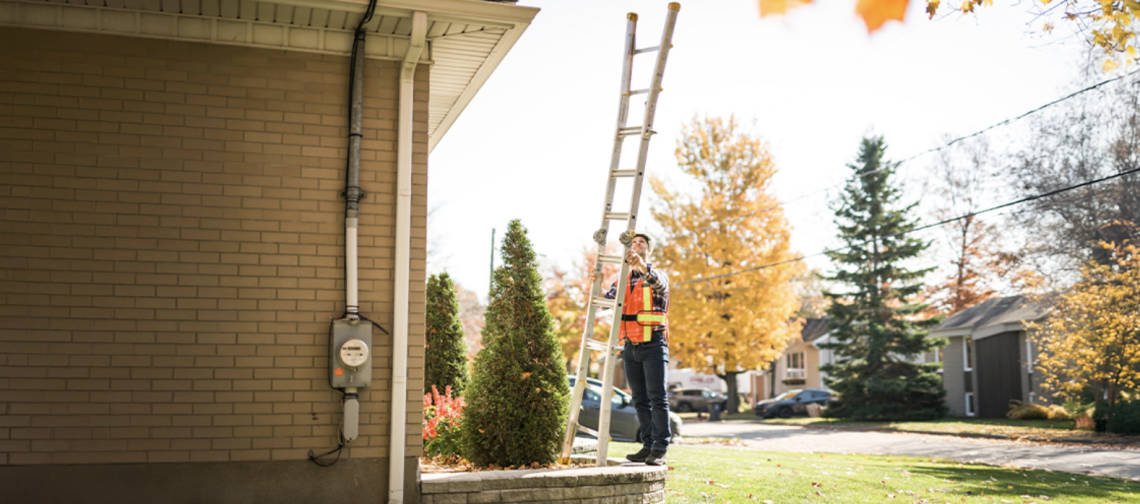Is This Fall the New Spring for Buying a Home?

For decades, the housing market’s seasonal pattern has been reliably predictable: a surge in spring, the peak of summer, followed by a slowdown during fall and into winter.
This year, however, might be different. Mortgage rates have decreased, sellers are more open to negotiation, and there are more homes available for sale. Instead of a slowdown, fall is poised to be a good opportunity for buyers who have been sidelined by affordability headwinds.
“This will be a busy fall,” said Ryan Bullock, a real estate agent with United Real Estate in Philadelphia. “If the [mortgage] rates drop, it will make more people willing to sell their home. We could expect to see a very intense market for both buyers and sellers.”
Buyers who skipped the spring, burned by higher rates and limited options, are starting to return.
Sellers who tested lofty prices earlier in the year are coming back with more realistic asks and, in many cases, incentives to lure buyers. The tone of the market is shifting.
Mortgage rates are lower
Mortgage rates, which hovered near 7% for much of the past year, have eased into the low-sixes. The average 30-year fixed rate sat at 6.13% on Sept. 16, according to Mortgage News Daily. That was nearly its lowest level in 12 months. And while rates have come back up slightly since then, they are still lower than they have been for some time.
That change can add up to hundreds of dollars in monthly savings on a typical mortgage, giving buyers a wider, more expensive pool of homes to choose from.
“If you have been sidelined the past few years, enter the market now, take advantage of the rate drop,” said Cynthia Mattiza, a global real estate advisor at Sotheby’s in Austin, Texas. “Look at listings that may been sitting on the market a while where they may still be negotiating room.”
Lower rates also free up some would-be sellers looking for a different home. That makes it a bit more palatable to swap their current mortgage for a new one.
There are more homes on the market to choose from
After years of tight supply, buyers are finally seeing more “For Sale” signs.
Active listings up more than 20% from a year ago, according to August Realtor.com data. Homes are spending roughly a week longer on the market than they did last summer, and more than one in five listings nationwide had a price cut.
All of that translates to buyers having more leverage and sellers needing to meet them halfway.
“As the market begins to heat up again, my advice to buyers is buy the house you want to live in,” said real estate agent Lorraine Getz, of Compass in Los Angeles. “In the long run, your home that you are enjoying living in should build equity.”
How homebuyers can capitalize on this moment
If you’ve been waiting, now is the time to put your finances in order.
“The best advice for buyers is to begin [the mortgage] pre-approval now and start searching,” said Bullock. “You can always lock into a lower rate if you find a home in the next month. You will also be able to refinance when the rates get lower.”
Pull your credit reports, pay down revolving debt, and gather your paperwork (W-2s, pay stubs, bank statements), so you can move fast on a pre-approval. When the right property appears, you’ll be ready.
Ask your lender to explore different price options. Even a slight decrease in rates can expand your budget into a new range. Maybe the home you dismissed in May is now within reach.
And if you’re shopping in a market with many lingering listings, don’t hesitate to make an offer with contingencies or request repairs. You might find room to negotiate that wasn’t available before.
How home sellers can position themselves
Sellers still have a chance to close a deal this fall, but strategy is key. Price your home according to recent comps, not spring peaks. (Comps are similar, recently sold properties in the same area.) A realistic starting price beats multiple price cuts later.
Invest in the presentation of the home, think quality photos, clean rooms, small upgrades, because buyers now have more options.
“Sellers need to do all the necessary things to get their homes market-ready,” said Mattiza. “Pricing is still very much the key factor in how quickly it will move.”
Flexibility matters, too. Covering part of a buyer’s closing costs, offering a repair credit, or changing the closing date can help get your home under contract faster without significantly lowering your asking price. With more listings available, small advantages make a difference in helping you stand out.

Hidden advantages of a fall housing market
Fall can also mean smoother logistics and financial perks.
Inspectors, appraisers, and contractors often have more availability after the summer crush, speeding up the due diligence that can stall a deal in spring.
Builders eager to close their books before year’s end sometimes roll out incentives, upgrades, rate buydowns, or closing credits, that weren’t on the table in May. (Rate buydowns can temporarily, or even permanently lower the mortgage rate on your loan.)
Additionally, buying before December 31 may allow you to claim part-year deductions for mortgage interest and property taxes on your upcoming tax return.
Touring a home in cooler months also reveals things you’d miss in spring, from drafty windows to how the roof performs under wet leaves. This gives you more insight into what you’re buying.
Why moving to a new home in the fall makes sense
Spring has long been the traditional time for moving. Parents time closings to wrap up before the school year, movers are booked solid, and buyers feel pressure to get in before summer.
But in fall, competition eases. Moving companies have more openings and sometimes better rates.
In many regions, the weather is cooler, which may be preferable for packing, loading, and even renovations.
And for anyone not bound to a school calendar, such as downsizers, retirees, or remote workers, off-peak moving means more flexibility and less stress. Settling in before the holidays also lets you enjoy the winter months without juggling a move in December.
By Margaret Heidenry • NewAmericanFunding.com




